Are you interested in the history and culture of China? Do you want to explore the home of giant pandas? If your answer to both questions is yes, you can’t miss our China Escorted Tour with Panda Visit. This tour will last 13 days, covering Beijing, Xi’an, Chengdu, Guilin, and Hong Kong. During the 13 days, our professional tour guide will accompany you all the time and offer you better services. In China escorted tours including panda visit, except for visiting cute pandas in Chengdu, you will go sightseeing in other tourist attractions. China escorted tour starts from Beijing escorted tour and ends with Hong Kong escorted tour. In Beijing, except for ancient buildings, such as Summer Palace and Forbidden City, you will go to Bird’s Nest and Water Cube, the main stadiums of the 2008 Beijing Olympic Games, to take photos. In Xi’an, you will visit the Terracotta Warriors and Horses Museum, one of the eight wonders in the world. In Chengdu, you will go to Chengdu Research Base of Giant Panda Breeding, where you can see baby pandas in their delivery room. In Guilin, you will take the Li River Cruise for 4 hours to appreciate the beautiful scenery of Li River. And in Hong Kong, you will visit Victoria Park to overlook the magnificent scenery of Hong Kong. Don’t hesitate, just join us. And if you want to know more details, please contact us whenever necessary.

Welcome to Beijing, the capital of China. Beijing is an ancient capital with a history of more than 3,000 years. Today your China Escorted Tour with Panda Visit is about to begin. Our local tour guide will be waiting for you at the airport in advance, holding your name sign. Then you will be transferred to the hotel to take a good rest to eliminate your fatigue from taking the international flight. In the following days, our local tour guide will accompany you all the time on the escorted tour to Beijing. As a megacity in China, Beijing has a permanent population of 21,189,095 as of 2020. And it has 16 districts with a total area of 16,410.54 square kilometers. Tomorrow you will explore the charm of this ancient city with modern characteristics.
Today you will visit some famous tourist attractions in Beijing. After breakfast, you will visit Tian’anmen Square in the center of Beijing. This square starts from Tian’anmen Gate Tower in the north, Zhengyangmen Gate Tower in the south, the National Museum of China in the east, and the Great Hall of the People in the west. It is 880 meters long from north to south, 500 meters wide from east to west, covering an area of 440,000 square meters. During the Ming (1368-1644) and Qing (1636-1912) Dynasties, Tian’anmen Square was a royal square outside the main entrance of the Forbidden City. It was surrounded by walls to form a forbidden area that ordinary people could not enter. Today it is a sacred place for major celebrations and grand gatherings. For example, the ceremony to celebrate the 70th anniversary of the founding of the People's Republic of China in 2019 was held here.
After visiting Tian’anmen Square, then we will head north for the Forbidden City (closed each Monday) on foot. The Forbidden City, located in the center of the central axis of Beijing, is the imperial palace of the Ming and Qing Dynasties. It covers an area of about 720,000 square meters, with a construction area of about 150,000 square meters. Moreover, it has more than 70 palaces of different sizes. In 1406, Zhu Di, the third emperor of the Ming Dynasty, commanded people to build the Forbidden City, with the Forbidden City of Nanjing as a model. When you go sightseeing here, you will find that in front of some big palaces, there are much Danbi Stones (a large rectangular stone with dragon patterns inlaid in the middle of the steps). The largest Danbi Stone in the Hall of Preserving Harmony was mined in Fangshan District, about 36 kilometers away from the Forbidden City. Without cranes in ancient times, how did laborers transport stone here? According to historical books, the laborers dug a well every mile on both sides of the road. When the temperature was low enough in the cold winter, they poured water from the well on the road. So the road was covered by a thick layer of ice, becoming very smooth. Through this kind of road, the stone was transported to the palace.
After lunch, we will visit the Temple of Heaven in the Dongcheng District. Covering an area of 2.73 million square meters, the Temple of Heaven was built in 1420. In the Ming and Qing Dynasties, it was a place where emperors worshipped heaven and prayed for a bumper harvest. There are lots of ancient buildings in the Temple of Heaven, including Divine Music Administration. Built in 1420, Divine Music Administration was dedicated to the music and dance of the royal ceremony of worshipping heaven in the Ming and Qing Dynasties. It was not only a royal sacrificial building but also a place for living and leisure. Officials at all levels, who accompanied the emperor in this ceremony, lived in this place during the ceremony. In addition, there were some Taoist priests, who enjoyed a high reputation for planting flowers and herbs. So people at that time came here to appreciate the flowers and buy herbal medicines.
Today your last stop is the Summer Palace, a royal garden in the Qing Dynasty. Summer Palace is located in the western suburb of Beijing, 15 kilometers away from the city center. With an area of 3 square kilometers, its water surface accounts for about three-quarters. As a place for a summer resort, Summer Palace has a Chinese time-honored palace restaurant, whose name is the Listening to the Orioles Pavilion Restaurant. After the founding of the People’s Republic of China, this restaurant was designated as a venue for the heads of the country and foreign dignitaries. It has successively received Queen Elizabeth of the United Kingdom and Secretary of State Schultz of the United States. There is a palace-style banquet hall, with a full set of antique tables, chairs, and tableware. When you come here, you could learn the dining etiquette in the past. If you are lucky, you can see girls in Qing-style costumes here. That will give you wonderful memories.
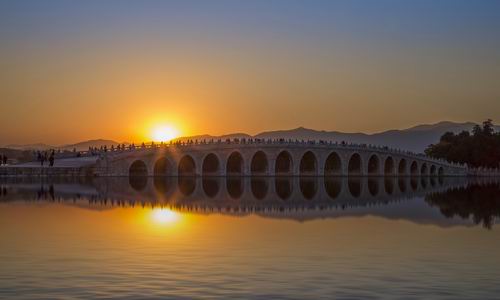
In the morning, we will head northeast for Ming Tombs, about 45 kilometers away from the center of Beijing. After breakfast, we will drive about one hour to get here. Ming Tombs is the general name of the 13 emperors’ tombs after the capital was moved to Beijing in the Ming Dynasty. We will visit Ding Tomb, which is located at the foot of Dayu Mountain. Built between 1584 and 1590, Ding Tomb is the tomb of Zhu Yijun (the 13th emperor of the Ming Dynasty) and his two empresses. The emperor was only 28 years old when the tomb was built. The discovery of the Ding Tomb provided important materials for the study of Ming history. More than 3,000 artifacts were unearthed from its underground palace, including gold, silver, jade, jewelry, and golden crowns. The structure of its underground palace can be regarded as a classic representative of imperial tombs in the Ming Dynasty.
In the afternoon, we will drive northwest for about 30 minutes to Juyongguan Great Wall, 25 kilometers away from Ming Tombs. In the Yuan Dynasty (1271-1368), Juyongguan was an important pass from Beijing to Duolun (a city established as a second capital besides the capital). As emperors often passed here, palaces, temples, gardens and other buildings were constructed. In the Ming Dynasty, it became a military center, with a length of more than 4,000 meters. In the center of Juyongguan Great Wall, there is a pedestal of “cross-street tower”(a kind of Buddhist architecture), called “Yuntai”. Made of white marble, it was built between 1342 and 1345. And there is a doorway in its center, through which people, vehicles, and horses can pass. What’s more, when you go through this doorway, you will see many exquisite Buddha statues carved on the top of the doorway.
After visiting Juyongguan Great Wall, we will return to the hotel. On the way to the hotel, there is a stop for you to take photos. You will see Bird’s Nest and Water Cube, two landmark architectures located in the Beijing Olympic Park. Bird’s Nest is the main stadium for the 2008 Beijing Olympic Games, covering an area of 20.4 hectares. With a construction area of 258,000 square meters, it can accommodate 91,000 spectators. During the 2008 Beijing Olympic Games, swimming, diving, synchronized swimming, water polo, and other competitions were held in the Water Cube. During the Beijing 2022 Winter Olympics, it will be converted into the “Ice Cube” as a competition venue for the curling event. Lots of tourists at home and abroad came to Olympic Park to take photos in front of the two buildings everyday. Taking pictures here is also a testimony of your visit to Beijing.
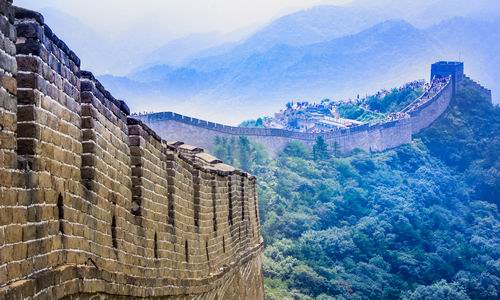
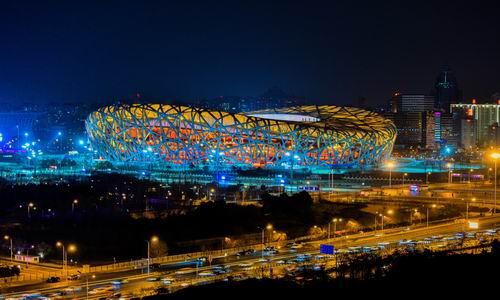
 Xi'an
Xi'an Your Beijing escorted tour will be over today. After breakfast, you need to return to your room to pack your luggage quickly. And please bring your luggage to the lobby of the hotel on time. Then you will be transferred to the train station to take the estimated train G307 09:38/15:16 to Xi’an in northwestern China. And there will be a lunch box for you in case you don’t like the food on the train. As soon as you arrive in Xi’an, our tour guide will pick you up at the train station. Xi’an, the capital of Shaanxi Province, is an ancient city with a long history. Tomorrow the Xi’an escorted tour will begin. By exploring the beauty of this city, you will fall in love with it.
Today you will visit famous tourist attractions in Xi’an. After breakfast, we will go to Terracotta Warriors and Horses Museum in Lintong District, about 44 kilometers away from the center of Xi’an. We will drive northeast for about an hour to get there. As one of the eight wonders in the world, Terracotta Warriors and Horses is a category of ancient tomb sculptures. Terracotta warriors and horses are the burial objects of Ying Zheng (also called Qin Shihuang, the first emperor in Chinese history). Those who have traveled here often see the “headless” terracotta warriors and horses. Why are some of the terracotta warriors intact and some damaged? Through more than two thousand years under the earth, almost none of the unearthed terracotta warriors and horses were intact when they were excavated. There are professional people to repair these objects by combining historical documents with modern technology. Visitors may only spend 3 seconds watching a terracotta warrior, but a professional worker may need 5 months to repair it.
After lunch, we will visit Xi’an Beilin Museum, the earliest museum established in Shaanxi Province. Xi’an Beilin Museum mainly collects, displays, and studies inscriptions and epitaphs, making it a unique art museum in China. This museum was developed on the basis of preserving the stone scriptures of the Tang Dynasty (618-907). Its exhibition is composed of three parts: stele forest, stone carving art, and other cultural relic exhibitions, with a total of 12 exhibition rooms. And it has more than 11,000 cultural relics on display, covering an area of 4,900 square meters. Walking into the museum, you can also see the paifang (a traditional style of Chinese architectural arch or gateway structure) and panchi (the pool in front of a school in ancient times) of Yuan, Ming, and Qing Dynasties in the south of its courtyard. It is not only a treasure house of ancient Chinese calligraphy art but also a collection of ancient literature, and stone carving treasures.
After visiting Xi’an Beilin Museum, we will go to Ancient City Wall nearby. The construction of the Ancient City Wall started in 1370 and finished in 1378. It is the largest and best-preserved ancient city wall in China, with a circumference of 14 kilometers. There are four main gates, Changle Gate in the east, Yongning Gate in the south, Anding Gate in the west, and Anyuan Gate in the north. The city gate is the key point in the city defense system, and it is also a weak point. Normally, it is the gateway to the city. But in war, it is the primary goal for both sides. The gates of Ancient City Wall are very solid. Its gate leaves are made of wood, which is 16 centimeters thick. Building a city gate needs 2.8 cubic meters of wood, weighing 3.19 tons. When you come here, you can touch the door to feel its thickness.
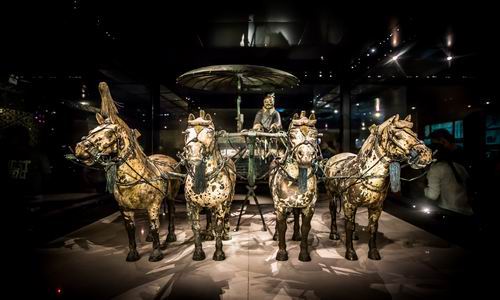
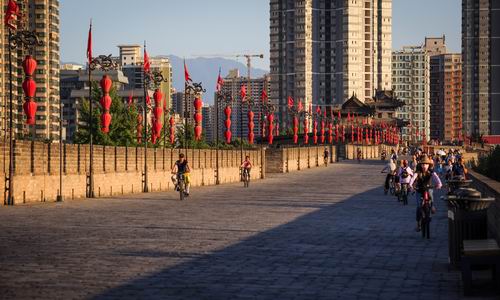
 Chengdu
Chengdu You will say goodbye to Xi’an today. When you finish breakfast, you can return to your room to pack your luggage. After checking out from the hotel, you will be transferred to the train station. Then you will take the estimated train D1923 10:03/13:59 to Chengdu, the capital city of Sichuan Province. Based on your train schedule, our local tour guide will pick you up at the train station. Then you will be transferred to the hotel. Covering an area of 14,335 square kilometers, Chengdu has a permanent population of 20,937,800 as of 2020. As the birthplace of ancient Sichuan civilization, it is one of the top ten ancient capitals in China and the first batch of national historical and cultural cities. Your Chengdu escorted tour will begin tomorrow.
When it comes to Chengdu, we have to talk about giant pandas, the national treasure of China. Almost every tourist who travels to Chengdu wants to see giant pandas. Without exception, we will go to Chengdu Research Base of Giant Panda Breeding after breakfast. It is a well-known conservation and research institution for giant pandas and other rare and endangered wild animals in China and even the world, which integrates scientific research and breeding of giant pandas, and educational tourism. It is the best place to see giant pandas. Its Villa No.1 and Villa No.2 are places where adult pandas live. Here you can see the daily life of pandas, including playing, walking, eating, and sleeping. Moreover, Moonlight Nursery House and Sunshine Nursery House are places where pregnant pandas and newborn and young pandas live. When you come here, you can go to the delivery room to see baby pandas.
After visiting these cute pandas, we will go to Du Fu Thatched Cottage in Qingyang District. Covering an area of about 50 acres, Du Fu Thatched Cottage is the place where Du Fu, a famous poet of the Tang Dynasty, lived. Du Fu lived here for nearly four years and composed more than 240 poems. It is a sacred place in the history of Chinese literature. One of the famous attractions here is the Great Hall. Its Chinese name is Daxie, which means official place, so it’s not difficult to guess that this is a place for work in ancient times. When Du Fu Thatched Cottage was rebuilt in 1811, considering that Du Fu used to be an official, people built an office place. So the Great Hall came into being. When you arrive in the middle of the Great Hall, you can see that there is a bronze statue of Du Fu, which is the work of Qian Shaowu, the famous Chinese sculptor.
After lunch, we will visit Chengdu Wuhou Shrine Museum in Wuhou District. Chengdu Wuhou Shrine Museum, covering an area of 150,000 square meters, was built during the Three Kingdoms(220-280). It was originally a special shrine to commemorate Zhuge Liang, who was an outstanding politician and military strategist in ancient China, and later became a joint shrine of both king and minister. Chengdu Wuhou Shrine Museum is the materialization of the people’s affirmation and praise of Zhuge Liang. The culture of the Three Kingdoms(220-280) is a rare cultural heritage in Chinese history that cannot be ignored. It demonstrates the traditional spirit of loyalty, wisdom, and bravery of the Chinese nation. Chengdu Wuhou Shrine Museum is exactly a relic that shows the quintessence of these traditional cultures. After visiting this place, you will have a deep understanding of the culture of the Three Kingdoms.
After experiencing the culture of Three Kingdoms, we will go to Jinli Street, a part of Chengdu Wuhou Shrine Museum. Covering an area of more than 30,000 square meters, with a construction area of more than 14,000 square meters, Jinli Street is 550 meters long. In the past, it was once one of the oldest and the busiest streets in the history of The Shu Han Kingdom (221-263). Now it is a pedestrian street, which integrates tourism, shopping, leisure, and entertainment. There are tea houses, inns, restaurants, bars, stages, snacks, and handicrafts, which fully demonstrate the folk customs of Sichuan. What’s more, this ancient street regularly holds folk performances, such as traditional weddings, folk music, and drama. You will have fun here in the authentic atmosphere of Sichuan folk culture.
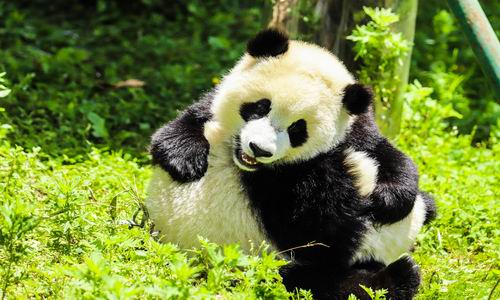
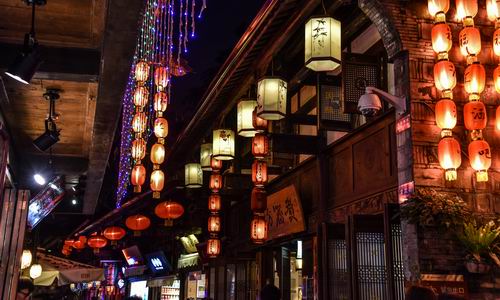
Today is the second day in Chengdu. After breakfast, we will drive south for about 153 kilometers to Leshan Giant Buddha, which will take about 2 hours. Leshan Giant Buddha is a seated Maitreya Buddha with a height of 71 meters. Each of its insteps can accommodate more than 100 people. The Leshan Giant Buddha was carved in 713 and completed in 803, which lasted about 90 years. It is the largest carved stone statue on a cliff in China. Besides, Leshan Giant Buddha has a cleverly designed and hidden drainage system, which plays an important role in protecting the Buddha. In the head of the Buddha, there is horizontal drainage ditched on the 4th, 9th, and 18th layers of the 18-layered spiral shell-shaped bun. There is also a ditch on the left side of its chest and a ditch on the back of its right arm. On the back of its two ears, there are caves connected with each other on the left and right. These ditches and caves form a scientific prevention system of drainage, which better prevents the erosion of the Buddha.
We will arrange a hearty lunch for you. Then, after a short break, we will go to Huanglongxi Ancient Town in Shuangliu District. Driving north for about 150 kilometers, we will get there in 2.5 hours. It is one of the top ten ancient towns in China. There are many ancient cultural tourist attractions in Huanglongxi Ancient Town, including ancient temples, ancient folk houses, and ancient Buddha caves. With a history of more than 1700 years, it is a small tourist town. And as it has a profound history, it becomes a well-known natural film and television shooting base, and more than 100 films and TV plays have been shot here, like Zhuo Wenjun and Sima Xiangru. What’s more, there are 6 ancient banyan trees, which are over 300 years old in this ancient town. Their intertwined roots on the ground make this town more conspicuous. As a symbol of this town, every time visitors come here and they take photos under these ancient trees.
After visiting Huanglongxi Ancient Town, we will return to the hotel in Chengdu. You can lie in bed and have a good rest.
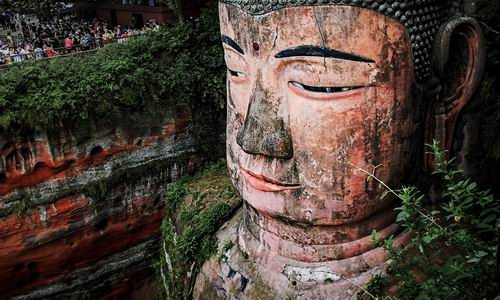
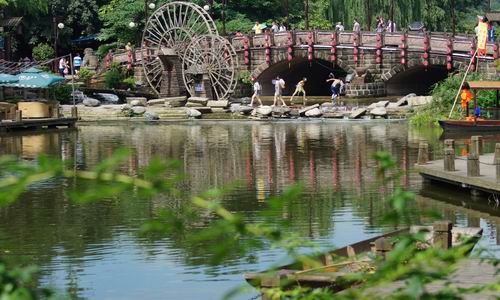
 Guilin
Guilin Today you will go to a new city, Guilin, an international tourist city in Guangxi Province. In the morning, you will have a hearty breakfast in the hotel. Then you can return to your room to pack up your luggage. When you’re ready, according to the flight timetable, you will be transferred to the airport. You will take the estimated flight CA4764 11:20/13:05. Our local tour guide will pick up you at the airport in Guilin and transfer you to the hotel for a good rest.
 Yangshuo
Yangshuo Guilin
Guilin You will explore the beauty of Guilin today. After breakfast, we will go to Mopanshan Wharf, about 35 kilometers away from the downtown of Guilin. We will drive southeast for one hour to get there. Then we will take the Li River Cruise for 4 hours to visit Li River, the essence of the scenery of Guilin. Like a green belt, the Li River winds among mountains. On the cruise, we will appreciate the beautiful scenery on both sides of the Li River. For example, in the south of Nine Horses Painting Mountain, there is a yellow rock, with a width of tens of meters. It looks like a piece of yellow cloth that spreads to the bottom of the river. So people call this place Yellow Cloth. The river here is clear and tranquil, with the reflection of clouds and mountains. This is the unique “the Reflection of Yellow Cloth”, which is the best place to visit the reflection of green peaks. In 2000, the People's Bank of China issued the fifth set of the Renminbi, in which the scenery of the Li River on the back of the 20 yuan banknote was “the Reflection of the Yellow Cloth”. So when you come here, you can hold the 20 yuan banknote to take photos. What’s more, you will have lunch at the Li River Cruise. Eating delicious food on the cruise, while appreciating surrounding scenery, will leave you with a deep impression.
In the afternoon, we will visit Yangshuo West Street in Yangshuo County. Yangshuo West Street is a pedestrian street, located in the center of Yangshuo. It is about 8 meters wide and 800 meters long. With a history of more than 1400 years, it is the oldest and most prosperous street in Yangshuo. There are the best-preserved buildings, such as Ming city walls, memorial halls, inscriptions, and ancient pavilions. Dr. Sun Yat-sen (the great pioneer of China's democratic revolution) once delivered a speech here. Artists Zhang Daqian, Xu Beihong, Qi Baishi, and Huang Binhong once lived in Yangshuo West Street and created a large number of landscape paintings. Moreover, leaders of more than 150 countries have left their footprints here. Jimmy Carter (the 39th president of America) and his wife went sightseeing here by riding bicycles. As the main tourist street in Yangshuo, there are handicraft shops, calligraphy and painting shops, hotels, cafes, and bars. So when you are tired, you can sit in a cafe with a cup of coffee.
After visiting Yangshuo West Street, we will return to Guilin by car. Today your travel to Guilin is near the end. Tomorrow you will start your next stop of 13-day China Escorted Tour. All you need to do is to have a good rest in the hotel, so you will be energetic the following day.
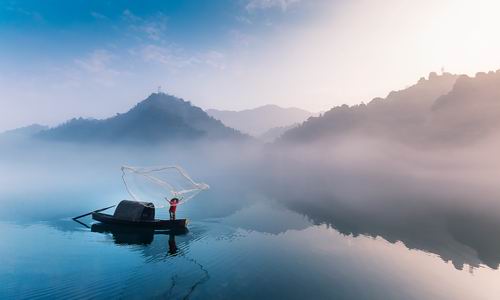
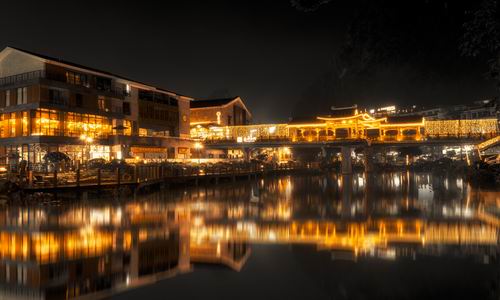
 Hong Kong
Hong Kong Your tour in Guilin will come to an end today. After breakfast, you will have enough time to pack up your luggage. Then please bring your luggage to the lobby of the hotel on time. You will be transferred to the train station to take the estimated train G319 12:38/15:57. In the afternoon, you will arrive in Hong Kong in southern China. Hong Kong includes Hong Kong Island, New Territories, Kowloon Peninsula, and 262 surrounding islands. With a land area of 1,106.66 square kilometers, its total population is 7,474,200 as of the end of 2020, making it one of the most densely populated regions in the world. Tomorrow you will appreciate the beautiful scenery of Hong Kong and explore its charm.
Today, you will begin your tour in Hong Kong. After a hearty breakfast, you will visit Victoria Peak, the premier tourist attraction in Hong Kong. Victoria Peak integrates sightseeing, entertainment and shopping, attracting more than 6 million local citizens and visitors each year. In addition, there are a number of outdoor observation platforms on Victoria Peak, where you can overlook the magnificent scenery of Hong Kong. Besides, to give you an interesting and special experience, we will arrange for you to take Peak Tram. There is no doubt that the Peak Tram is the most representative testimony of Hong Kong’s development. The Peak Tram went into service on May 30, 1888, and became the earliest tram system in Asia. The railway is 1,350 meters long and there are 5 stops on the way. It only takes you about 8 minutes from the foot to the top of the mountain. On the top of the mountain, there is a model of Peak Tram, and you can also take some pictures here.
Leaving Victoria Peak, your tour guide will accompany you to Stanley Market. Stanley is a small town in the south of Hong Kong. As a microcosm of Hong Kong, it is a place that shows the confusion of Chinese and Western cultures. Stanley Market is also a famous attraction, where you can find and buy many souvenirs you like. The most popular souvenir shops here are Chinese-style souvenir shops, including paintings and calligraphy, clothing, silk products, and handicrafts. These goods are not only from Hong Kong but also from Thailand and China’s mainland. You can buy some and then share them with your friends. Wandering along with Stanley Market, you can enjoy the fun of shopping and appreciate its charm.
Today your last stop is Repulse Bay, located in the south of Victoria Peak. Known as the “First Bay in the World” and the “Oriental Hawaii”, Repulse Bay is crescent-shaped. In summer, a large number of tourists flock to this bay. There are many people wearing all kinds of swimwear, constituting a colorful picture. Even in winter, young men and women in swimsuits can be seen. And there are many restaurants, fast food shops and supermarkets around the beach. What’s more, teahouses near the sea are good places to appreciate the glorious sunset. At the eastern end of Repulse Bay, there are many barbecue grills under the shade of the trees.
After appreciating the Repulse Bay, we will return to the hotel. Your sightseeing in Hong Kong will come to an end today. You will have free time this afternoon. This evening, you should take a good rest to relieve the fatigue of travel in a day.
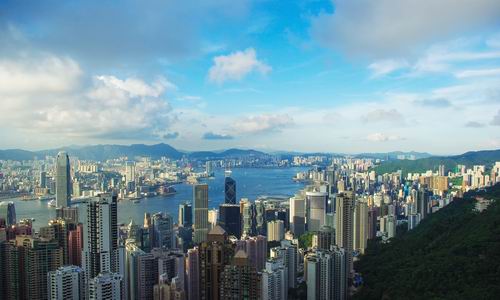
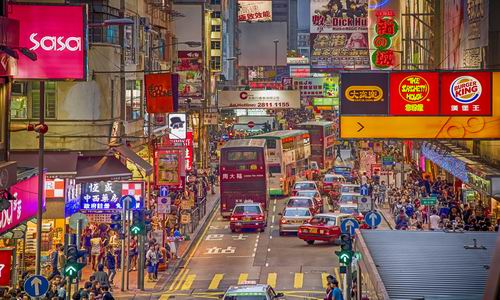
Your 13-day China Escorted Tour will come to an end today. So it’s time to say goodbye. After breakfast, you can return to your room to pack up your things. Then you will be transferred to the airport. After this 13-day tour, you will have a deeper understanding of China. Welcome to China again to feel its charm.
Editor: Deng Kaili
Proofreader: Summer Hou
| City | Five Star hotel list | Four Star hotel list |
|---|---|---|
| Beijing | Sunworld Dynasty Hotel Beijing Wangfujing | Novotel Beijing Xinqiao |
| Xi'an | Tianyu Gloria Grand Hotel Xi'an | Xian Grand Dynasty Culture Hotel |
| Chengdu | Sofitel Chengdu Taihe | Yinhe Dynasty Hotel |
| Guilin | Lijiang Waterfall Hotel | Guilin Park Hotel |
| Hong Kong | Harbour Grand Kowloon | Harbour Plaza North Point Hotel |
 |
![]() About your child or infant, please contact us for a discounted price.
About your child or infant, please contact us for a discounted price.



We started with a few days in Beijing & ended in Shanghai, from where we visited the Forbidden City and Great Wall. In between we visited Terra Cotta Warriors Museum, Panda Base, Shanghai Disneyland.

We had a wonderful holiday in China which will remain long in the memory. China is a breathtakingly beautiful country full of splendid temples and palaces, mountains and rivers, peaceful rural scenes and bustling shopping streets.
 QUICK ENQUIRY
QUICK ENQUIRY